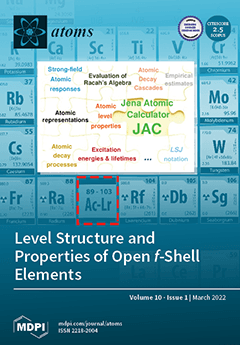Open AccessEditor’s ChoiceArticle
Demonstration of a Compact Magneto-Optical Trap on an Unstaffed Aerial Vehicle
by
Luuk Earl, Jamie Vovrosh, Michael Wright, Daniel Roberts, Jonathan Winch, Marisa Perea-Ortiz, Andrew Lamb, Farzad Hayati, Paul Griffin, Nicole Metje, Kai Bongs and Michael Holynski
Cited by 10 | Viewed by 5103
Abstract
The extraordinary performance offered by cold atom-based clocks and sensors has the opportunity to profoundly affect a range of applications, for example in gravity surveys, enabling long term monitoring applications through low drift measurements. While ground-based devices are already starting to enter the
[...] Read more.
The extraordinary performance offered by cold atom-based clocks and sensors has the opportunity to profoundly affect a range of applications, for example in gravity surveys, enabling long term monitoring applications through low drift measurements. While ground-based devices are already starting to enter the commercial market, significant improvements in robustness and reductions to size, weight, and power are required for such devices to be deployed by Unstaffed Aerial Vehicle systems (UAV). In this article, we realise the first step towards the deployment of cold atom based clocks and sensors on UAV’s by demonstrating an UAV portable magneto-optical trap system, the core package of cold atom based systems. This system is able to generate clouds of
atoms, in a package of 370 mm × 350 mm × 100 mm, weighing 6.56 kg, consuming 80 W of power.
Full article
►▼
Show Figures





